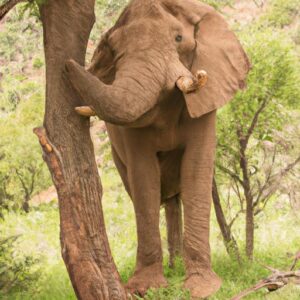Introduction
Have you ever stopped to wonder about the majestic creatures roaming the savannas of Africa? Giraffes, with their towering height and elegant strides, captivate the imagination of both young and old alike. For children, these gentle giants hold a special allure, sparking curiosity and fascination with their unique features. As we delve into the world of giraffes, it becomes clear why these animals are a favorite among kids and adults alike.
It is crucial to provide children with accurate and engaging descriptions of giraffes. By painting a vivid picture of these creatures, we not only educate young minds about the wonders of the natural world but also instill a sense of appreciation and empathy for all living beings. Through this article, we embark on a journey to unravel the mysteries of giraffes and showcase why they are truly remarkable animals deserving of our admiration. Let’s embark on this adventure together and discover the magic of giraffes through the eyes of a child.
Physical Characteristics of Giraffes
Height and Size Comparison
Giraffes stand tall as the tallest mammals on Earth, with adult males reaching heights of up to 18 feet! To put this into perspective, imagine standing face to face with a giraffe and realizing that its head alone could tower over most adults. Their sheer size and stature set them apart from other animals in the wild, making them truly a sight to behold.
Long Neck and Legs
One of the most distinctive features of giraffes is their incredibly long necks, which can measure up to 6 feet in length. This elongated neck allows them to reach the highest branches of trees to access their favorite leaves, showcasing their remarkable adaptation to their environment. Additionally, their long legs enable them to cover vast distances with grace and agility, making them well-suited for life on the African savanna.
Unique Coat Pattern
Giraffes boast a striking coat pattern that sets them apart from all other animals. Their patches, or spots, are as unique as fingerprints, with no two giraffes possessing the exact same pattern. This intricate design serves as a form of camouflage, helping them blend in with the dappled light and shadows of their habitat. The beauty of their coat pattern not only makes them visually stunning but also plays a crucial role in their survival in the wild.
Habitat and Behavior
Natural Habitat of Giraffes
Giraffes are denizens of the vast African savannas, where they roam freely across the grasslands and open woodlands. These gentle giants are well-adapted to this diverse ecosystem, with their long legs and necks allowing them to reach high branches for food. The savannas provide ample space for giraffes to move about and graze, showcasing their grace and agility in their natural habitat.
Diet and Feeding Habits
Feeding primarily on leaves, twigs, and fruits from acacia trees, giraffes are known as browsers, utilizing their long necks to access foliage that other animals cannot reach. Their specialized diet has led to unique adaptations, such as prehensile tongues and tough lips that protect them from thorns. By understanding the dietary habits of giraffes, we gain insight into their role as essential herbivores in maintaining the balance of the savanna ecosystem.
Social Behavior in Giraffe Herds
Despite their solitary nature, giraffes exhibit social behavior within herds, forming loose associations with other members for protection and companionship. These gentle giants communicate through subtle gestures, such as postures and movements, fostering bonds within the group. Observing the interactions within giraffe herds provides a glimpse into their intricate social dynamics and the importance of community in the wild.
Adaptations for Survival
How Giraffes Use Their Long Necks to Reach Food
Giraffes are renowned for their impressive height, with adult males reaching up to 18 feet tall. This elongated neck is not just a striking feature but also serves a critical purpose in their survival. By possessing such long necks, giraffes can effortlessly reach the leaves of tall trees, their primary source of food. This adaptation allows them to access nutrition that other animals cannot reach, giving them a competitive edge in their ecosystem.
Camouflage Techniques to Avoid Predators
Despite their towering stature, giraffes have developed effective camouflage techniques to evade predators. Their coat pattern, a unique mosaic of patches and spots, blends seamlessly with the dappled sunlight filtering through the trees. This intricate design acts as a natural camouflage, making giraffes almost invisible against the backdrop of the savanna. By mastering the art of disguise, giraffes can move stealthily through their habitat, minimizing the risk of falling prey to predators.
Running and Defensive Strategies
When faced with danger, giraffes rely on their impressive speed and agility to escape potential threats. Despite their large size, giraffes can sprint up to 35 miles per hour, outpacing many predators. Additionally, their powerful hind legs can deliver swift kicks, serving as a formidable defense mechanism. By combining speed and strength, giraffes demonstrate their remarkable ability to adapt and survive in the wild, showcasing the true essence of nature’s resilience.




